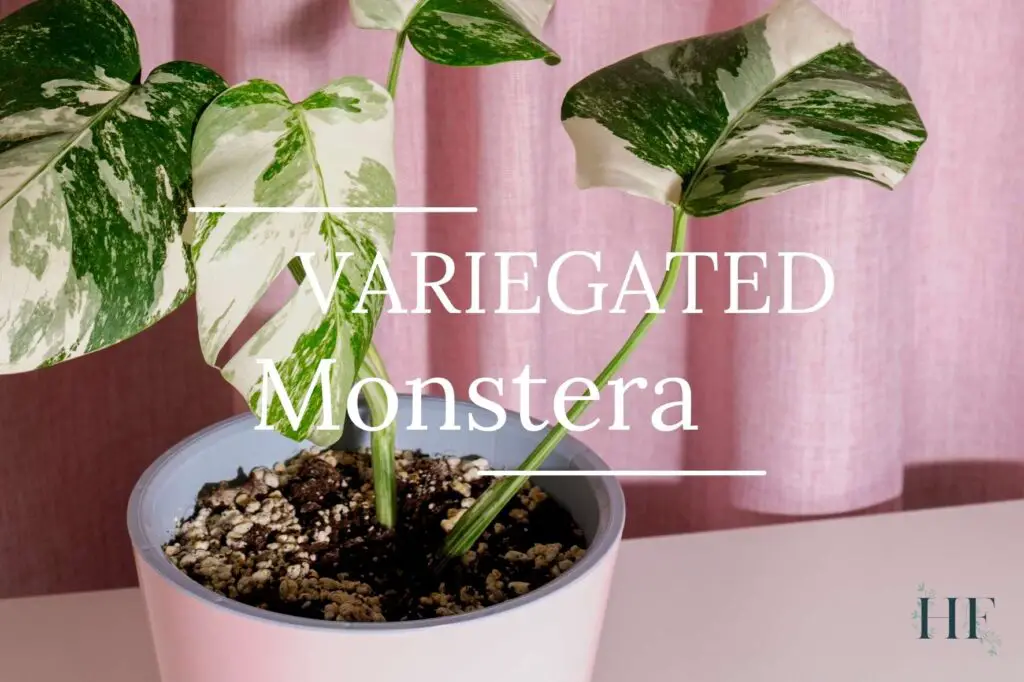Monsteras have become a very popular houseplant all over the world, so it’s not surprising that some variegated varieties have caught the eye of houseplant lovers and collectors.
In this blog post, I will clarify what a variegated Monstera is, how to distinguish it, the most popular cultivars of variegated Monsteras and why they are so expensive.
I will also answer some frequently asked questions like “can I make my monstera variegated” and “how do I get my variegation back.”
What Is a Variegated Monstera?
A variegated Monstera is the result of a natural mutation, a tissue culture done in the labs, or the mosaic virus. Variegation alters the capacity of the plant’s leaves to produce chlorophyll, their green pigment.
That’s why a variegated Monstera can be identified by discolouration and pattern on leaves, vines, and stems. This variegation can vary in colour: cream white (albo), yellow (aurea), and green (sport).
What Causes Variegation in Monstera?
Now, let’s take a look at the three possible causes of variegation on Monstera plants:
1) Natural Mutation
As the name indicates, this type of variegation is natural.
Genetic mutations, also known as chimeral variegation, can affect the capacity of the plant’s leaves to produce chlorophyll, the green pigment that enables leaves to produce energy to grow through photosynthesis.
The absence of chlorophyll in part of a plant’s leaves will result in discolouration or the absence of colour (turning white).
It is the most common type of variegation but the least stable because when propagating from green shoots, the variegation will not return. Also, the variegated leaves may end up turning green. Once you lose the variegation, new leaves will not have variegation either.
2) Tissue Culture
Tissue culture is a variegation technique done in labs to intentionally affect the capacity of Monstera cuttings to produce chlorophyll.
This technique permanently damages the genetic cells of the plant, and as a result, this type of variegation is stable. This means that your Monstera plant will not lose variegation over time.
3) Mosaic Virus
The Mosaic virus causes spots of white, yellow or green discolouration on leaves. That’s why Mosaic viruses are often mistaken for variegation in Monstera plants.
Unfortunately, this rare virus is not treatable and will kill your Monstera plant. Since it can also spread to other plants, it’s best to get rid of the infected Monstera. But don’t compost it because this can allow the virus to remain alive.
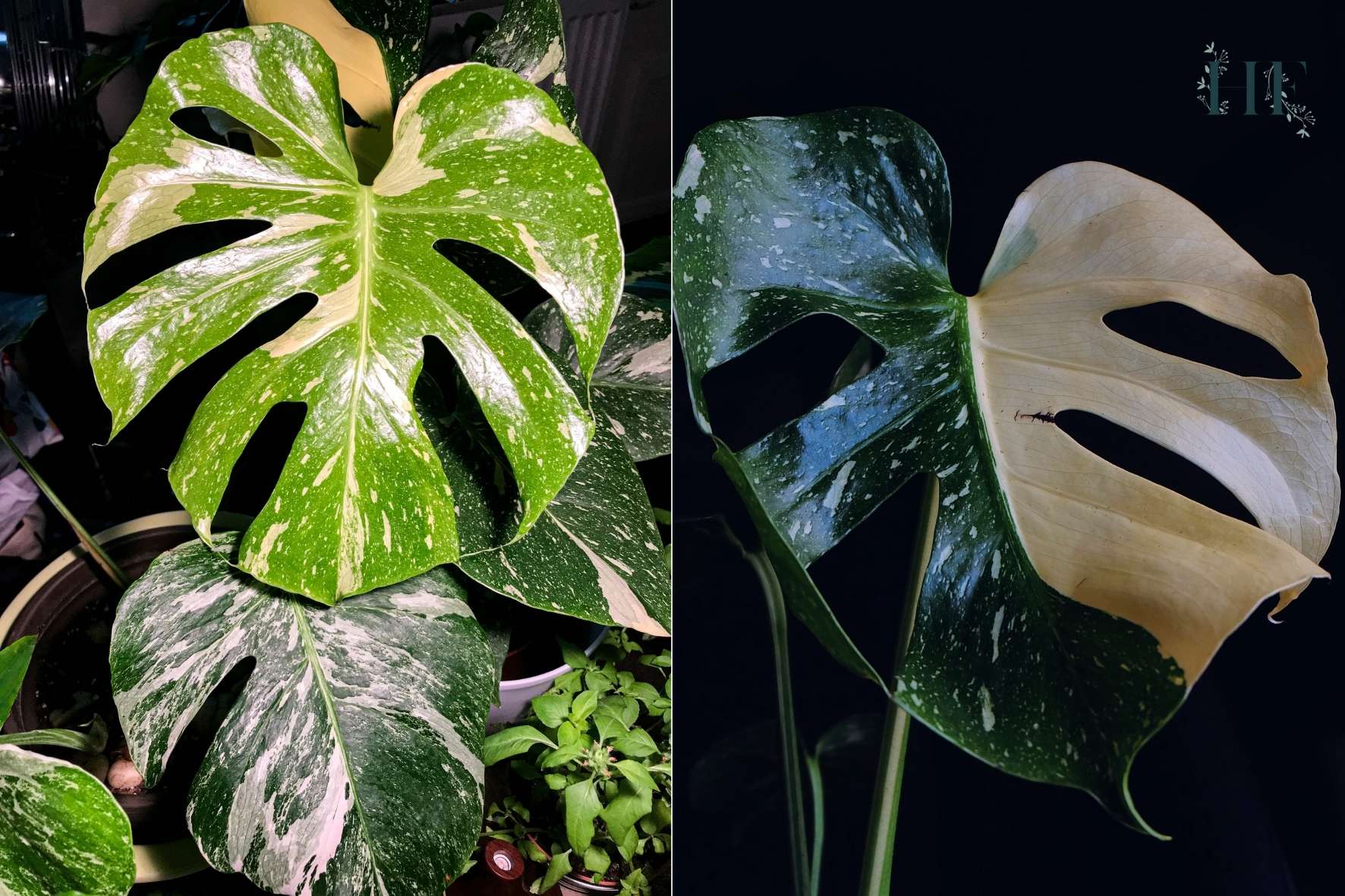
Signs of Variegation in Monstera
Here are the signs of Monstera variegations according to pattern and colour:
1) Patterns on Monstera Variegation
There are two types of variegation patterns in Monstera:
- Sectoral Pattern: Large patches of creamy white colour, and sometimes one leaf may turn all white. When half leaf turns white, it’s referred to as Monstera half-moon.
- Marble Pattern: Evenly distributed patches of light and dark colouring across the surface of the leaves.
2) Colours on Variegated Monsteras
There are three different colours of variegation found in Monstera and depending on the colour of the variegation, each has a different name.
- Albo: White or cream variegation, also the most popular one. Albo comes from albus, which is derived from Latin and means “white.” An example of this variegation is Monstera Deliciosa Albo.
- Aurea: Yellow variegation. Aurea is a Latin female name meaning “golden.” An example of this variegation is Monstera Deliciosa Aurea.
- Sport: Light green variegation.
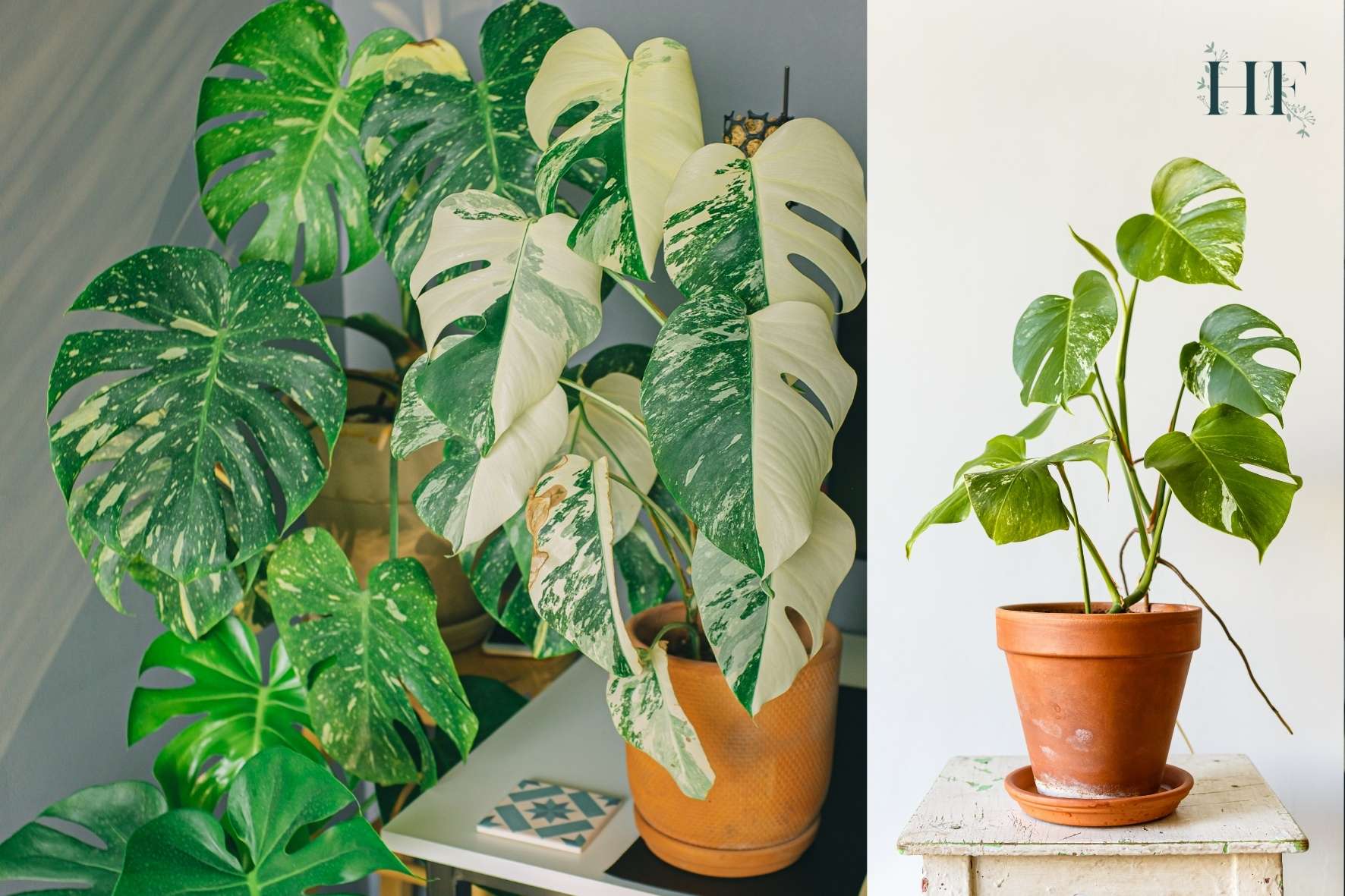
Is Variegated Monstera Rare?
After all those facts, are you still wondering how rare a variegated Monstera is?
A natural variegated Monstera is extremely rare, with the chance of having a plant randomly produce variegation at about 1:100,000. This means that you would have to make 100,000 cuttings and produce new plants.
Monstera can naturally become variegated, but as you can see it’s very rare. That being said, the Monstera Albo Borsigiana variety originated as a spontaneous mutation.
That’s why Monstera Albo Borsigiana is much rarer than Monstera Deliciosa Thai Constellation. Whilst Albo is only reproduced through cuttings, Thai is grown for commercial production in a lab. Also, Albo grows slower than Thai, which means more time in between cuttings.
Let’s dive into the different variegated varieties next.
The Most Popular Variegated Monsteras
There are 45 species of Monstera and 6 infraspecific names, i.e., cultivars or subspecies. One of the most known ones is Monstera Variegata.
Here are the most popular Variegated Monstera varieties:
1) Monstera Deliciosa Variegata
Also known as ‘Albo Variegata’ this variety has patches of white or cream on its leaves. It can also have leaves that are half green and half white, giving it the Monstera half-moon look.
This type of variegation occurs naturally due to genetic mutation after germination and is not stable (as mentioned in the causes of variegation section).
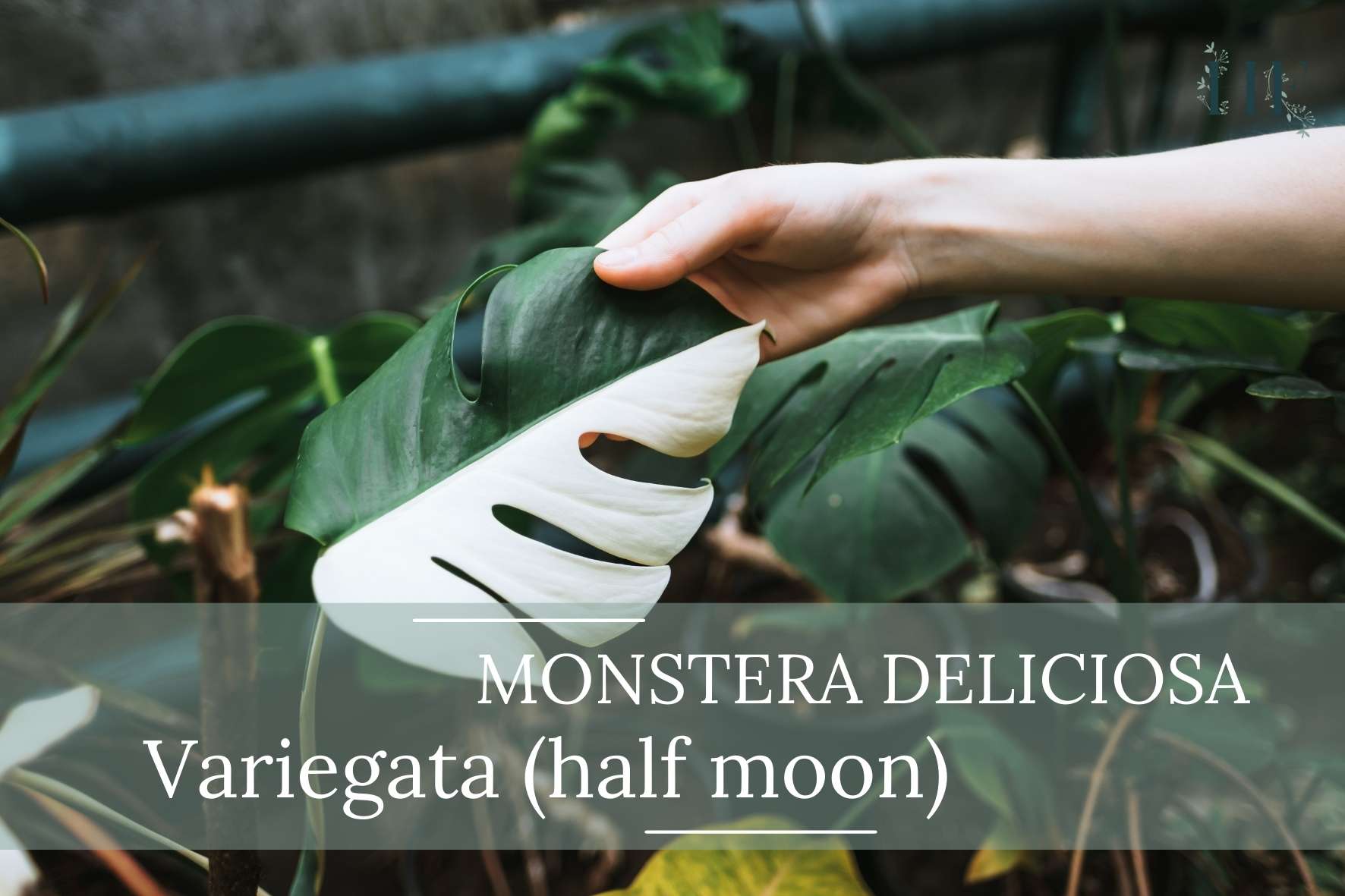
2) Monstera Deliciosa Albo Borsigiana
The ‘Borsigiana’ is actually a subspecies of Monstera Deliciosa. The ‘Albo Borsigiana’ is the variegated form of the ‘Borsigiana.’ Its leaves are a bit smaller than other variegated varieties of Monstera Deliciosa, and its leaves are dark green with patches of white.
The variegation on Albo Borsigiana is also natural and it will show as large patches of white on the leaves. These patches are unstable and can turn back to green.
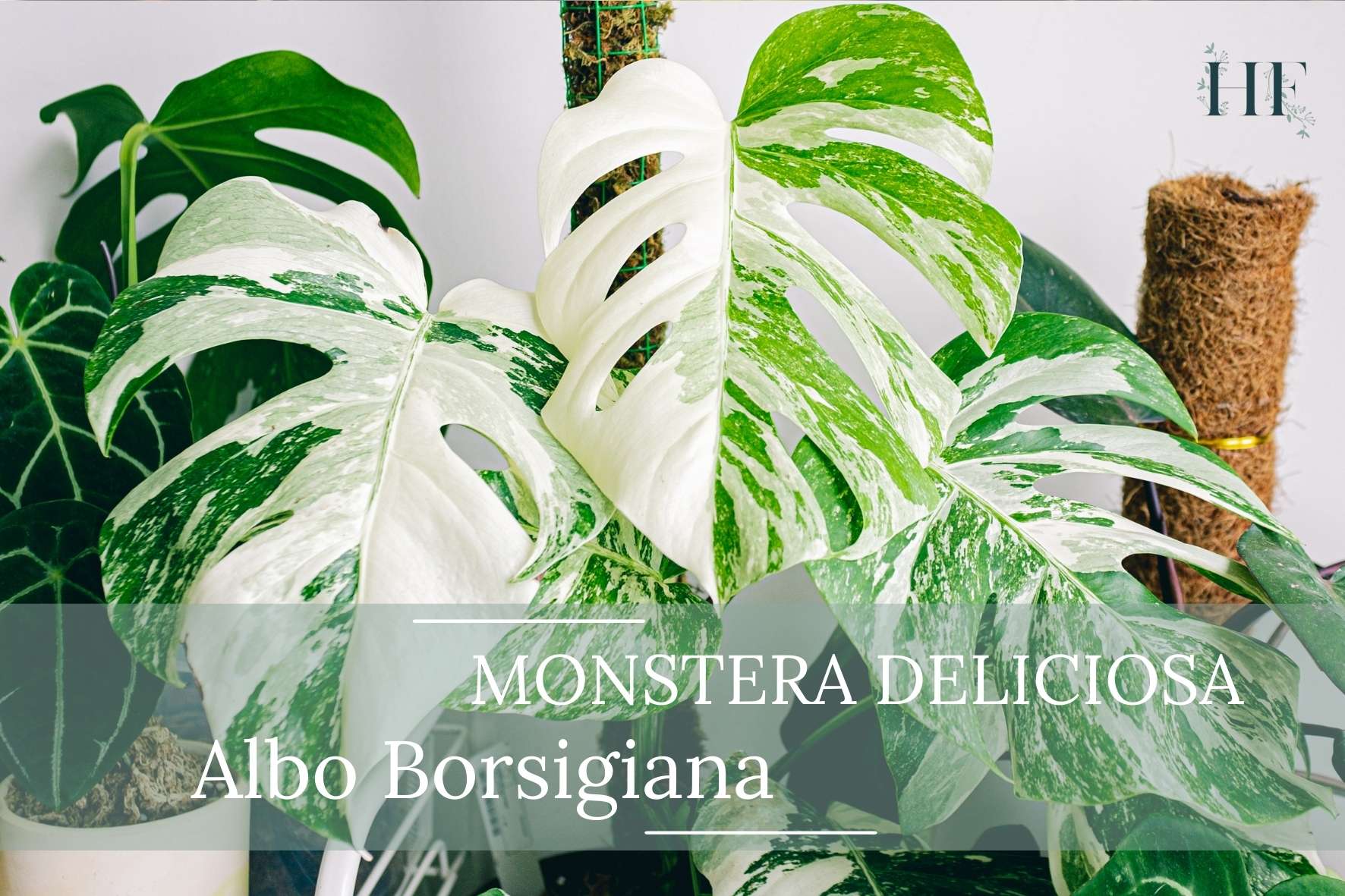
3) Monstera Deliciosa Thai Constellation
It’s named after splotches of creamy white that resemble a stary sky; it has both sectoral and marble patterns. The plant was first produced via tissue culture by a lab in Thailand, hence its name.
As a tissue cultured plant, the variegation is very stable and the new leaves will inherit it as they grow.
Most of the leaves (if not all) will have some type of variegation on them. This is a distinguishing characteristic as most of the other variegated Monstera varieties display both variegated and non-variegated leaves.

4) Monstera Deliciosa Aurea (or Marmorata)
It has a colour combination of dark green and yellow. Like the ‘Albo’ varieties, the yellow variegations can occur on small patches of tissue or on half of the leaf. The variegation resembles those of a Golden Pothos plant.
Monstera Aurea typically has less variegation on the leaves than other variegated Monstera varieties and some leaves can develop without any variegation at all. Also, its variegation is unstable.
This variety of Monstera Deliciosa is extremely rare, which is reflected in its high price.
5) Mint Monstera
Instead of white, cream, or yellow variegations, it has light mint green colouring mixed in with the traditional dark green of a Monstera.
The mint green variegation is not always consistent across the whole plant, and bright white variegation often occurs throughout the leaves as well.
Monstera Mint is very rare too, with not much widely known about this particular cultivar.
Why Is Variegated Monstera So Expensive?
Let’s face it, if you want to add a variegated Monstera to your collection, you will likely need quite a higher budget than what you would for a regular houseplant.
Variegated Monstera plants are expensive due to their rarity and difficulty to grow.
While variegated Monsteras are growing in popularity, their availability is still relatively scarce. Also, the high demand has caused prices to skyrocket.
On one side, many of these variegated cultivators cannot be grown from seed. So, they are either lab-cultured (such as the ‘Thai Constellation’), or they are cuttings from a naturally mutated mother plant (such as ‘Monstera Albo’).
On the other side, variegated Monsteras are usually more difficult to grow and more delicate than regular Monstera Deliciosa. This means that they are often grown and propagated by speciality nurseries and collectors. Also, slower growth means slower propagation and fewer new plants. Plus, their more delicate nature makes them more difficult to ship and distribute.
Here’s a reference on what to expect in terms of pricing:
| TYPE OF VARIEGATED MONSTERA | PRICE IN THE US | PRICE IN THE UK |
|---|---|---|
| Monstera Deliciosa Variegata | a rooted cutting from $250 and a young plant from $700 to $1,750 (and over) | cuttings from £40 and a 40cm plant from £180 to £260 and a 60cm plant £799.99 |
| Monstera Deliciosa Albo Borsigiana | a cutting from $100 to $250, a small plant about $800 and a mature plant over $1,000 | a cutting from £50 and a young plant from £180 to £675 |
| Monstera Deliciosa Thai Constellation | a young plant from $150 to $700 and a mature plant over $1,000 | a plant from £229 to £878 |
| Monstera Deliciosa Aurea | a young plant from $650 to $2,000 and a mature plant over $6,000 | a plant from £505 to £1,150 |
| Mint Monstera | a young plant from $1,300 to $3,950 | a young plant from £988 and a mature plant for around £10,000 |
As you can see, variegated Monstera prices can range from $100 to thousand dollars USD. The price will vary depending on if it’s a cutting or a plant, the size of the plant and also the number of leaves it has.
Where to Find a Variegated Monstera
The best place to find a variegated Monstera of either cultivar is in a nursery specializing in rare and exotic plants, online and offline.
In the U.K., for instance, houseplant e-commerce stores sell Monstera Deliciosa Variegata and Monstera Deliciosa Albo Borsigiana, when available. However, for the other three cultivars, most of the time you rely on private sellers on eBay and Etsy.
Also, I have found variegated plants in Garden Centres that tend to have a bigger selection of houseplants, but that isn’t the norm. They are unlikely to have them in stock due to the limited availability of these plants.
What To Know When Buying a Variegated Monstera
Here are some tips on purchasing variegated plants:
- When buying (especially online), always buy from a trustworthy place. Due to their popularity and high demand, there are many scams and low-quality plants out there.
- Remember that most cultivars cannot be grown from seeds, so avoid buying those.
- If you are buying a cutting, it is a must that the cutting has at least one node on the stem. Without a node, the cutting will never grow roots and develop into a viable plant.
- While a large amount of variegation can be tempting, avoid purchasing a variegated Monstera cutting or plant that is fully white or variegated. Ensure that it has some green since the lack of chlorophyll required to feed the plant means that the cutting will not survive.
- Consider the shipping method and conditions too. Since variegated plants are more delicate than regular plants, you want to avoid damage due to shipping.
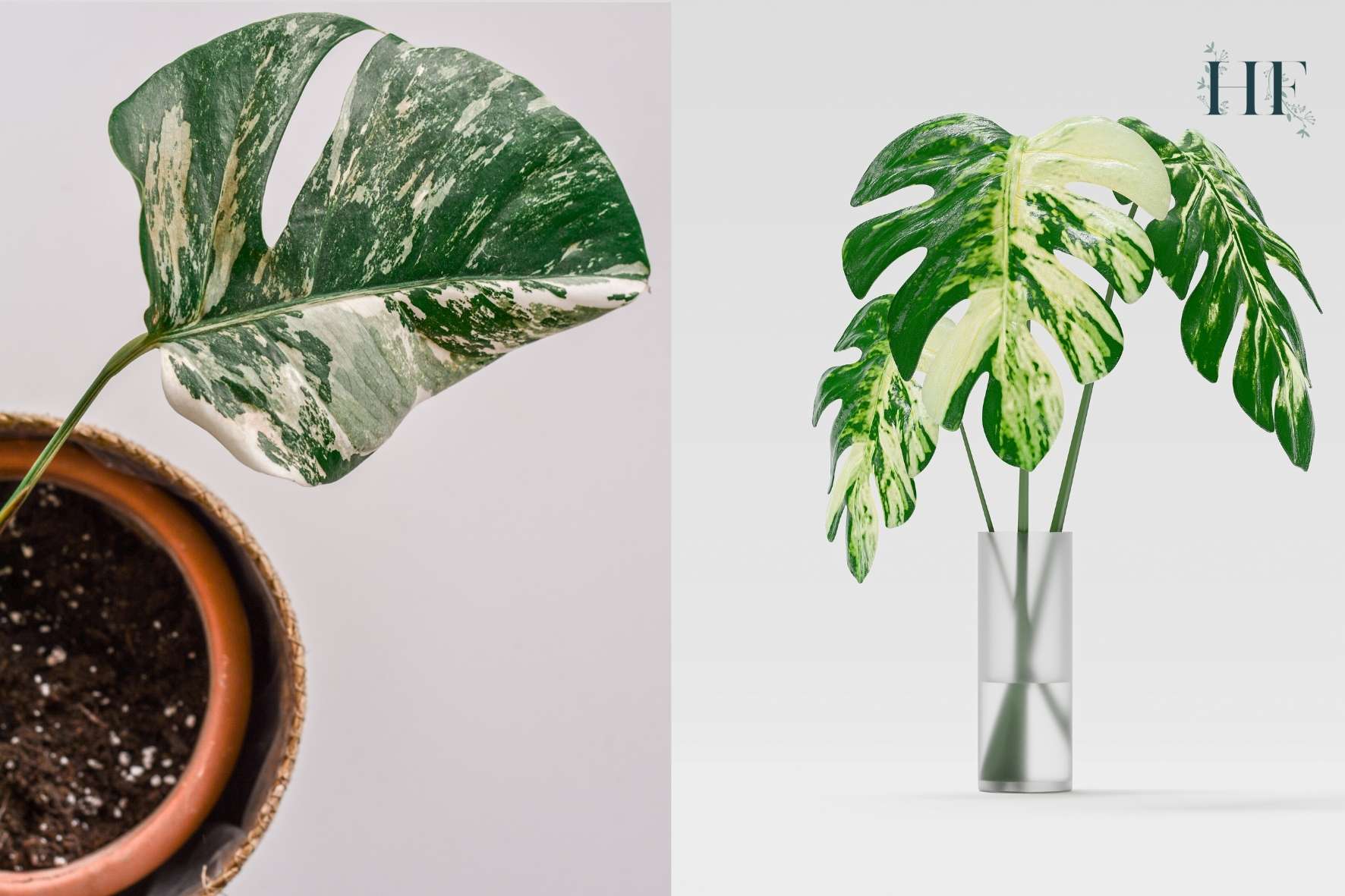
Related Questions
Can a Monstera Become Variegated?
A Monstera can develop variegated leaves spontaneously. That’s how the Monstera Deliciosa Variegata came to be, after all.
However, the chances of a regular Monstera naturally developing variegation is about 1 in 100,000. So, although possible, it’s highly unlikely.
Also, when spontaneous variegation happens, it’s temporary. It’s an unstable type of variegation, which means you might get a variegated leaf or two, but your plant won’t start pushing out all-variegated leaves.
Can I Make My Monstera Variegated?
You will need a cutting or plant that is already variegated.
While these plants can be propagated or grown from seed, you won’t know if a seed is variegated until it sprouts and grows. Therefore, don’t trust seeds being sold as variegated Monsteras.
How Can I Maintain Variegation?
Monstera Albo will have unstable variegation, whereas Thai Constellation variegation will not need to be maintained since it’s stable and it won’t lose its variegation.
You can promote more variegation of an already variegated Monstera plant by positioning your plant in a spot with more light.
The darker the spot, the greener the leaves grow. So, you can place your variegated Monstera near a window where it gets filtered light or under an artificial light source.
However, avoid direct sunlight since it can cause sunburn more easily on a variegated Monstera.
In addition, you can cut back any non-variegated new leaves only keeping variegated leaves, promoting only variegated leaves and hoping for the new growth to become more variegated.
Can a Variegated Monstera Revert?
Only those Monsteras that have unstable variegation due to a natural mutation can revert to their non-variegated selves. This is the case with both Monstera Deliciosa Variegata and Monstera Deliciosa Albo Borsigiana.
As previously mentioned, Monstera Albo Borsigiana has unstable variegation, which means that it can grow non-variegated green leaves too. It is not uncommon for variegation to completely disappear.
However, Monstera DeliciosaThai Constellation will always have variegation on its new leaves since it is produced via tissue culture in a lab and has stable variegation.
How Do I Get My Variegation Back?
You can prevent your Monstera from turning completely green by placing it under indirect sunlight and cutting off the leaves that have no mutation.
Insider Tip: The mutated cells in the stem and nodes will produce leaves that contain the mutation, but if a node doesn’t have any mutated cells, the next leaf will be green.
Also, you might want to consider cutting back the leaves that are all white. As beautiful as they are, they do not perform photosynthesis and will cause your Monstera to become stressed.
Do Variegated Monsteras Grow Slower?
Variegated Monsteras grow slower than regular Monsteras because they have less chlorophyll and therefore less surface to conduct photosynthesis.
That’s why variegated Monsteras need a lot more light than regular Monsteras. However, avoid direct sunlight since it can easily cause sunburn. Variegated leaves are more susceptible to sunburn than green leaves.
If you are wondering whether is possible to grow your variegated Monstera faster, check Monstera Growth Rate, Life Cycle and Lifespan Facts and Tips blog post, where 7 tips to encourage faster growth and other facts about how Monsteras grow.
For more interesting facts about these houseplants, check the 14 Surprising Monstera Deliciosa Facts [With Images] blog post.

